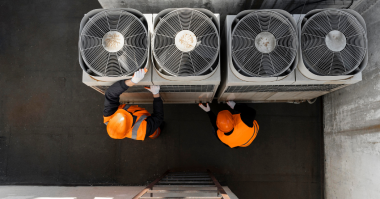Routine inspections form part of regular asset maintenance to identify early signs of failure, deficiencies, or aging-related degradation. Preventive maintenance inspections (PMIs) are vital when dealing with commercial and industrial pumping systems and occur before implementing suitable preventive measures.
These routine inspections are critical for streamlining preventive maintenance schedules and providing maintenance teams with vast information required for spare parts, tools, and personnel planning.
PMIs are a suitable alternative to condition-monitoring techniques that are a bit costlier —and enable companies to manage lean maintenance budgets effectively. Facilities can implement PMI to enhance existing maintenance programs, extending the life of several pumps and equipment under their care.
Technicians can conduct preventive maintenance inspections while equipment is running, and they use manual and digital tools for data collection:
- flashlights
- stroboscopes
- industrial stethoscopes
- infrared thermometers
- vibration pens.
How can companies streamline preventive maintenance inspections?
#1: Establish a schedule and create a checklist
Preventive maintenance inspections are necessary for identifying asset performance deficiencies. Facilities must establish specific inspection schedules while paying attention to manufacturer-recommended maintenance intervals. The goal is to ensure maintenance teams analyze all pump and equipment deficiencies to make informed decisions on the required maintenance interventions.
Companies should also standardize PMI checklists —identify components to be inspected and define equipment-specific inspection parameters. Are you checking pump vibrations, or should technicians focus on identifying leakages around connections? Adopt simple yet comprehensive checklists to simplify data collection and representation.
Facilities can enhance PMIs by digitizing inspection intervals and developing automated foolproof checklists to prevent field employees from capturing inaccurate information. Standardizing checklists means companies can build consistency among inspection teams and access accurate pre-maintenance data as and when needed. The inspection schedule should cater to all assets, but give more attention to the aging and critical ones.
#2: Automate inspections
Preventive maintenance inspection sounds simple. However, implementing and sustaining PMIs can be challenging. A facility containing several pumps and equipment can lose track of completed maintenance inspections or fail to finish them in time. It is a common problem when using manual maintenance management strategies.
Companies can improve PMIs by automating inspection schedules and leveraging digital solutions like computerized maintenance management systems (CMMS):
- generate alerts when inspections are due
- track the progress of routine inspections and analyze reports as they trickle in from different operators and technicians
- quantify pending inspections and allocate work to available personnel.
These systems use standard inspection templates simplifying periodic reporting and record keeping —making preventive maintenance more data-driven.
The company provides mobile devices to field personnel which are vital for capturing inspection data. For instance, an operator can identify leakage around process valves. They will use the inspection template to indicate an existing problem and attach additional evidence —photo or video —for easier troubleshooting and maintenance planning.
#3: Prioritize equipment repairs
PMIs can unearth several asset performance deficiencies. Companies should develop a standard for prioritizing each defect depending on its impact on equipment availability and efficiency. Something like excess pump vibration should be of more concern than peeling paint on a tubing fastener.
Developing a standard for ranking inspection defects helps maintenance technicians to prioritize repairs and implement relevant preventive measures to avert costly asset damages.
Companies can leverage digital inspection records to identify recurring inspection defects and use the data to establish reliability-centered preventive maintenance programs to eliminate the root causes of such deficiencies. The priority score should reflect a defect’s severity. That way, the maintenance team knows which preventive activities should come first.
#4: Invest in training
Employees performing PMIs should have adequate technical skills and competencies —they should know how different inspection tools work and ways to interpret and convert inspection results into maintenance interventions. Field employees with digital devices with automated maintenance tools should learn to report and keep a log of all PMIs.
Companies should invest in training programs to ensure employees understand basic equipment operating principles. They should know how to troubleshoot machinery and identify and categorize inspection defects.
Additionally, employees should understand how to fill and submit standard checklists. The training should cover basic information technology to help employees utilize digital tools for automated reporting and field data collection.
Let’s check this off
Establishing and sustaining an effective preventive maintenance inspection program takes time and requires investment in additional digital technologies. Initial investment costs vary depending on the complexity of assets and the frequency of preventive maintenance intervals.
Companies should focus on continuous improvement and effective data management to enhance maintenance planning, reduce maintenance costs, and extend asset life expectancy. Above all, facilities should keep upskilling technicians, operators, and other field employees to optimize the quality of preventive maintenance inspections.
Author’s bio:
Bryan Christiansen is the founder and CEO of Limble CMMS. Limble is a modern, easy-to-use mobile CMMS software that takes the stress and chaos out of maintenance by helping managers organize, automate, and streamline their maintenance operations.





Comments